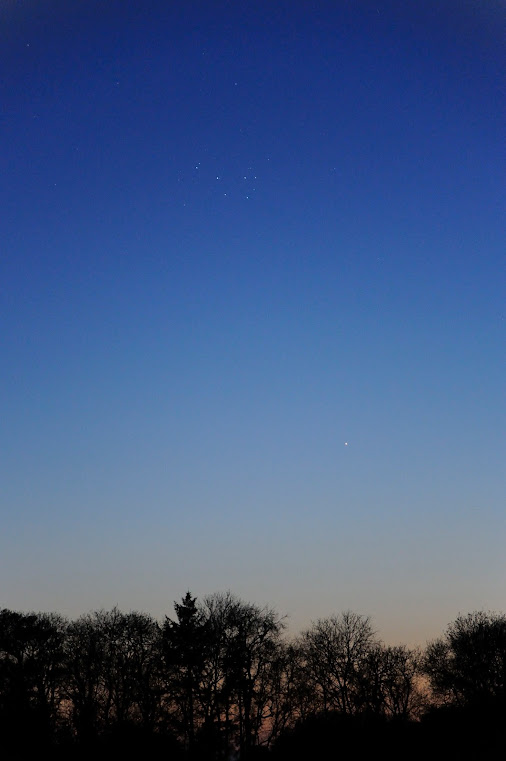We had some nice clear weather last night so I was out in the garden again trying to observe the variable stars Z and RY Ursae Majoris (see my previous post for full details). The constellation of Ursa Major (The Great Bear) is now on the western side of the pole star and is heading downwards. The big problem about observing at this time of year is that the sky doesn't get properly dark due to the sun being less than 18 degrees below the northern horizon. At least the moon was out of the way due to it being two days past new.
I found the pattern of stars again, using my 8x24 binoculars, that would lead me to Z UMa. At 11:42 BST I could just about make out star E on BAA chart 217.02 which meant that the limiting magnitude was fainter than magnitude 8.4. With a bit of concentration I figured out that Z at 23:09 UT was midway between B and C in brightness putting it at magnitude 7.4. You can view what other observers from the BAA estimate the magnitude of Z to be by looking at their database. If you click on 'Review Observations' and then select object Z UMa you can produce a 'Data Table' (try limiting the start and end dates from 01-05-2022 to 30-06-2022). The most recent observations are at the top of the table. My estimate seems to be in the right ball park for the 01-06-2022.
I then went on to look at RY UMa. I estimated at 23:22 UT that RY was midway in brightness between stars marked as 1 and 4. Star 1 is magnitude 6.7 and 4 is 7.7 which is quite a big difference (1 magnitude). But halfway in brightness would make RY magnitude 7.2 which is a bit brighter than the star labelled 2 which is what I saw. Again this estimate agrees well with other values on the BAA VSS database.
All text and images © Duncan Hale-Sutton 2022



